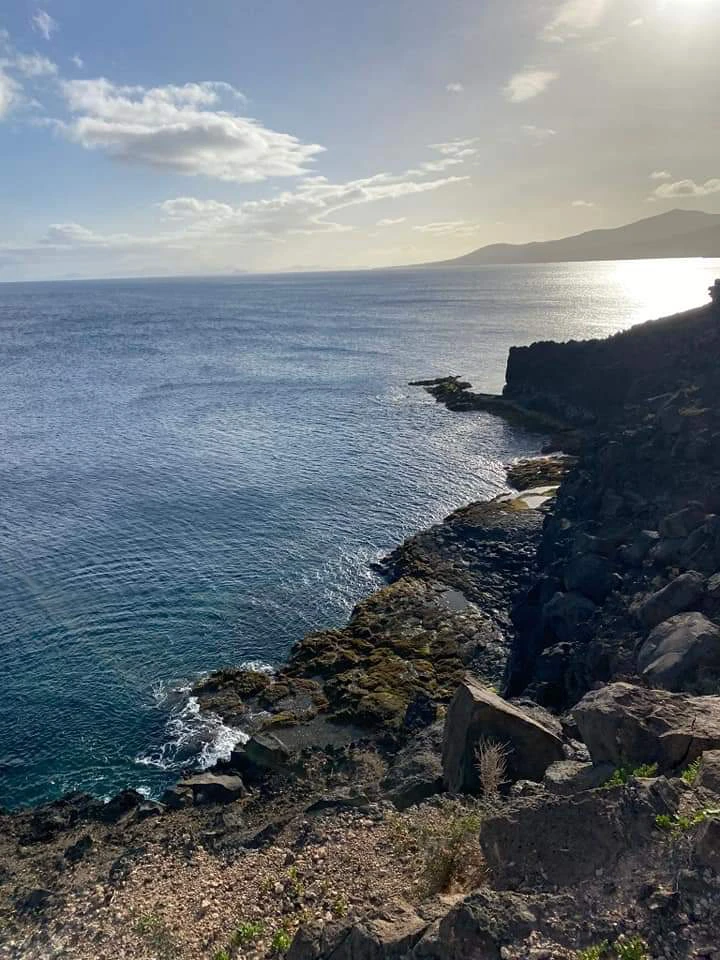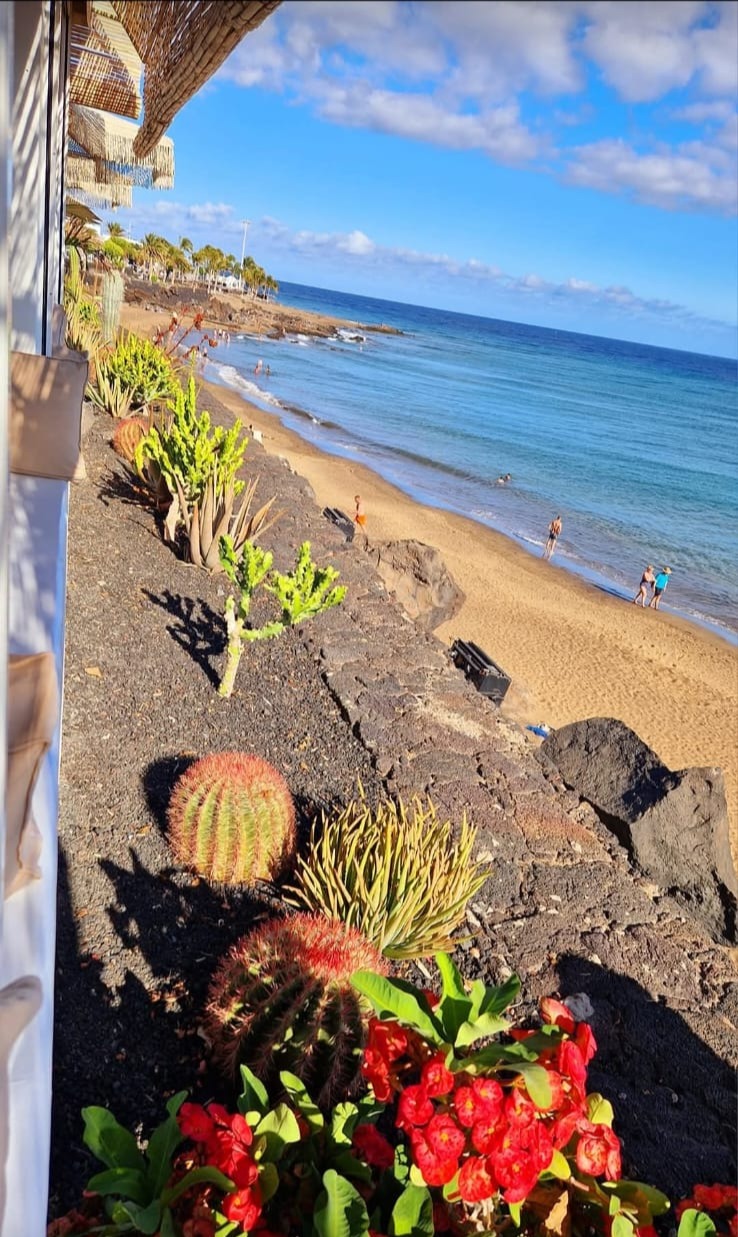Explore Lanzarote
Volcanic island

Lanzarote, is one of the eight Canary Islands which is located off the coast of West Africa administered by Spain, is known for its year-round warm weather, beaches and volcanic landscape.
Timanfaya National Park’s rocky landscape was created by volcanic eruptions in the 1730s. The Green Caves (Cueva de los Verdes) has caverns formed by an underground river of lava. East-coast resort Puerto del Carmen is home to whitewashed villas, beaches and dive centres.
Area: 845.9 km²
Elevation: 35 m
Max length: 60 km
Province: Las Palmas
Resorts
Puerto Del Carmen / Los Pocillos is one of the main resorts. This is where you will find our villas, some close to the action, others in more secluded spots.
Matagorda is a small, compact, easy going resort, with everything you need for your holiday close to hand.
Puerto Calero is all about the Marina, and an ambiance of quiet luxury.
Puerto del Carmen
Puerto del Carmen
ExploreMatagorda
Matagorda
ExplorePuerto Calero
Puerto Calero
ExplorePlaya Blanca
Playa Blanca
ExploreFiestas & Festivals
There are plenty of unique fiestas and festivals in Lanzarote that are well worth seeing. Virtually all of the events are religious in origin but you don’t have to be a Catholic or a Conajero (as the locals are known) to get involved.
Listed below are some of the biggest and best events, and these are augmented by Spanish national holidays along with more localised fiestas in specific villages, towns and municipalities throughout the year.
In Spain it is the Three Wise Men who come bearing gifts, not Father Christmas. And as a result twelfth night, or Epiphany, is one of the most important events on the festival calendar. Even more so if you are a child, as this is when (officially) you receive your Christmas presents. The event is marked with a colourful camel back procession as the three kings’ travel through main towns giving sweets to children.
Probably the best place to watch the festivities is in the islands capital Arrecife, where a large scale and well attended procession takes place on the evening of January 5th, usually commencing at 6pm.
The procession is normally repeated again later in Puerto del Carmen along the main Avenida de las Playas at about 9pm. Other processions may also make their way through every town and village on the island.
Carnival in the Canaries is a serious business. After the carnival in Rio de Janeiro, the larger islands of the Canaries host some of the biggest and grandest celebrations in the world, especially on the island of Tenerife. Lanzarote does its bit too though, and many holiday makers time their visit to coincide with this annual event, which traditionally commences in the last week of February. Carnival takes place on different dates in different locations, but the best places to catch the action are in Arrecife and Puerto del Carmen. Playa Blanca and Costa Teguise carnival is on a slightly lower scale.
In Arrecife the event stretches across a week or so, building up to the main procession which features brightly decorated floats, fantastic costumes with lots of riotous music and dancing.
After carnival, Corpus Christi is probably the next most colourful event in Lanzarote. As with most fiestas and festivals on the island the best place to see the celebrations is in the capital Arrecife.
On the Saturday afternoon following Corpus Christi the islanders create beautiful carpets of sea salt, in elaborate and colourful designs. You will see them all along the roads and pavements around the Church of San Gines which is adjacent to the El Charco area. You will also find some of these carpets of sea salt in the villages. The following day a major procession proceeds from the Church across the carpets of salt, so these works of art are visible for one day only. The date of this fiesta changes every year.
May 30th marks the anniversary of the date when the Canaries first gained autonomy from Spain back in 1983. Now it is an annual holiday across all the islands in the archipelago.
The fiesta is a celebration of Canarian culture and events are held across the island. School children don traditional dress, a variety of local dishes along with dancing to folklore music. The Canarian flag (white, blue and yellow) flies everywhere and the Cabildo organises fishing, Canarian wrestling and game hunting competitions.
Nuestra Senora del Carmen – mid to late July
The actual official Saints day of Nuestra Senora del Carmen is 16th July. From this date onwards a variety of events and celebrations are held in various towns around Lanzarote, including Teguise, Playa Blanca and Puerto del Carmen.
The most impressive aspect of this saint’s day is the maritime procession, where the effigy of Saint Carmen is paraded out of the church and carried through the town, down to the water’s edge. Then a boat festooned with flowers transports the saint out onto the waves. This boat is surrounded by a flotilla of fishing vessels, as the fishermen make their annual blessing of the sea and pray for a bountiful catch during the coming year.
Both Playa Blanca and Puerto del Carmen have churches dedicated the Nuestra Senora del Carmen. A repetition which testifies to both towns’ origins as small fishing villages, where many local families survival would have depended on the haul they could bring in from the sea.
The historical significance of the fiesta can be traced back all the way to the maritime town of Haifa in Israel. This is where the cult of Carmen (or carmel as she is known there) began.
Its emergence as a focal point in the Roman Catholic calendar occurred over centuries, but certainly by the eighteenth century the current style of festival had begun. An admiral, Antonio Barcelo Pont de la Terra, a native of Mallorca introduced a gala amongst his ships’ crew in honour of Carmen.
Today on this Balearic island the same commemoration still takes place in the town of Port d’Andratx. On the mainland in areas such as Fuengirola, similar processions occur, with the effigy of Carmen at their centre. Likewise Tenerife also has its own Fiesta of Senora del Carmen, except that it is celebrated in September, on the first Sunday of the month but the same traditions are observed nonetheless.
This major fiesta is held in honour of Arrecifes’ patron saint San Gines.
San Gines was formerly the Bishop of Clermont. During the 16th century he was responsible for the construction of a small hermitage, now the Church de San Gines, that ministered to the nearby population of the small inland port area called El Charco (also known locally as the puddle). Legend has it that during the 1700’s a portrait of the Bishop appeared, floating on the waters of El Charco, and from that moment on the “portenos” (port dwellers) proclaimed him the Patron Saint of the city. Whatever the truth of the legend, it is a great excuse for a fiesta and during the daytime much of the activity is concentrated around the El Charco area. Traditional island sports such as Canarian sailing and wrestling are celebrated and a new Miss Lanzarote is elected annually.
The whole event then culminates in an impressive and extremely well attended fireworks display on the main beach promenade next to the Arrecife Gran Hotel on the night of the 25th, usually starting at around 23.30 hours.
This is a fantastic fiesta celebrating the islands patron saint and marking the point where the flow of lava from yet another volcanic eruption miraculously came to a halt in 1824 just outside the village of Mancha Blanca.
This fiesta attracts serious crowds with most in traditional Canarian dress, with many people walking on foot to Mancha Blanca from all over the island as a form of pilgrimage. They are often accompanied by supermarket trolleys full of ‘refreshments’.
In Mancha Blanca itself the action revolves around the church where Dolores is paraded, as well as around the huge array of mobile bars and food stalls that spring up especially for the event. Behind the church there are large tents with lots of craft stalls selling their hand made goods also demonstrations on how things are made.

